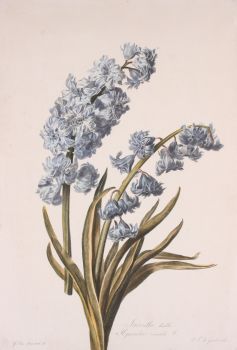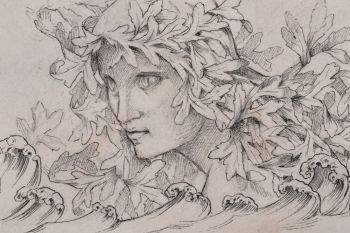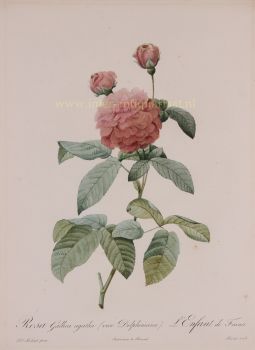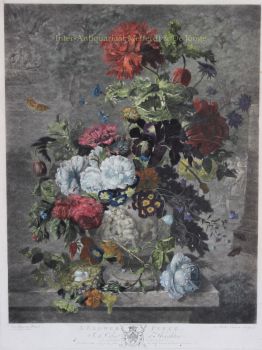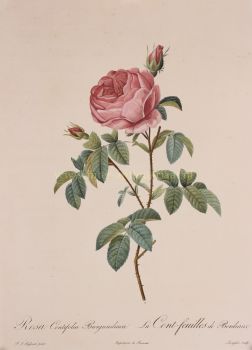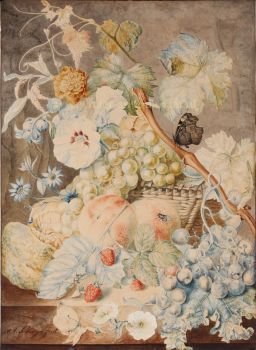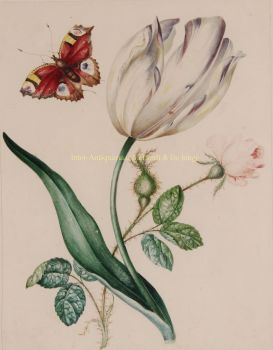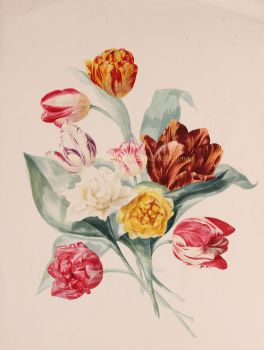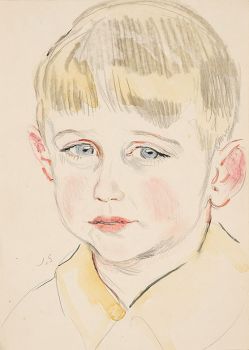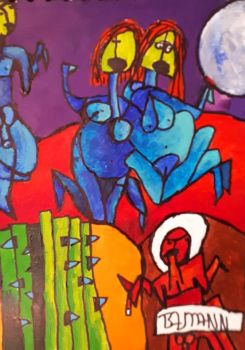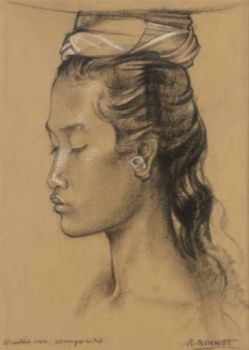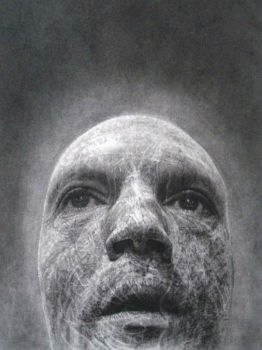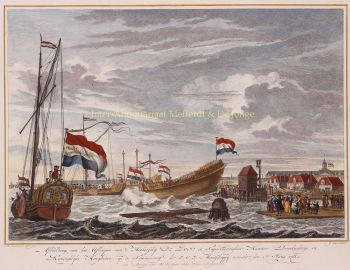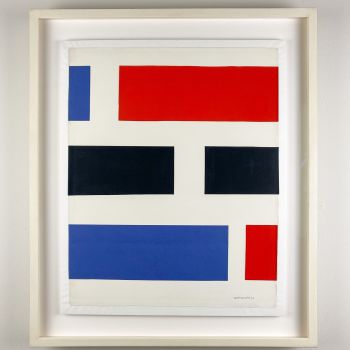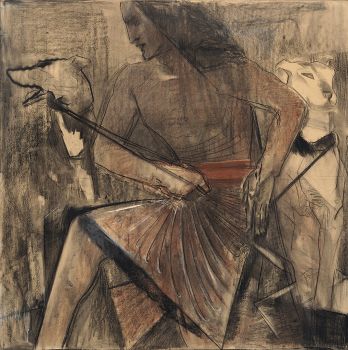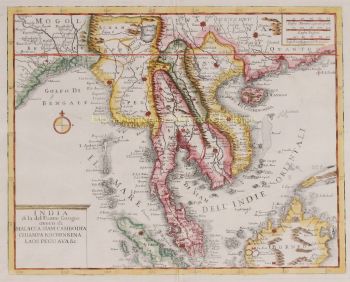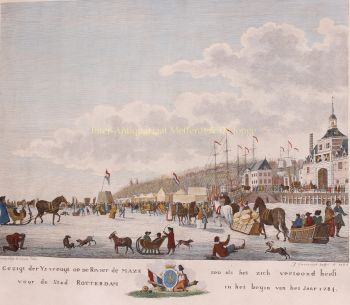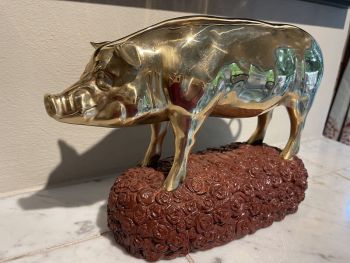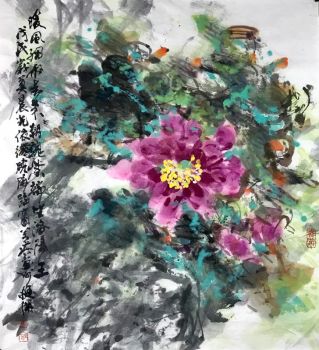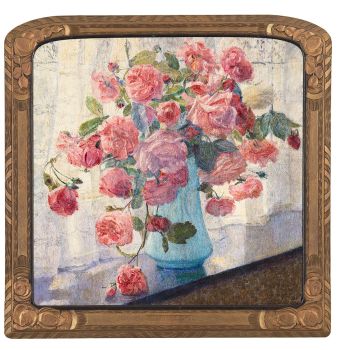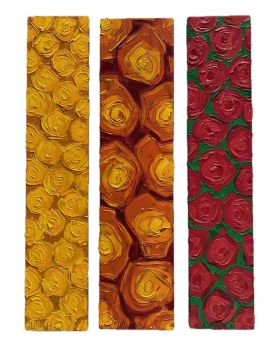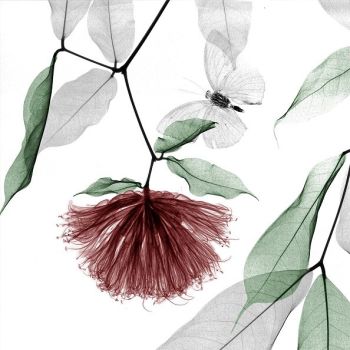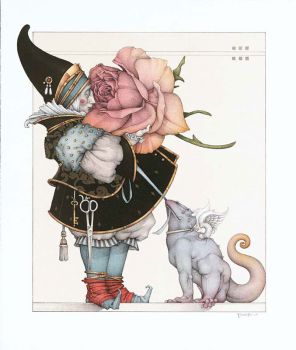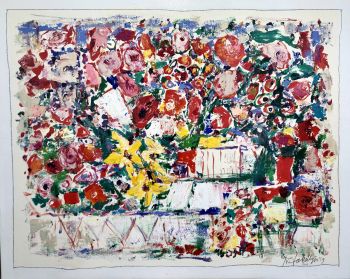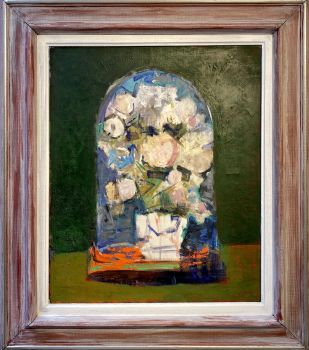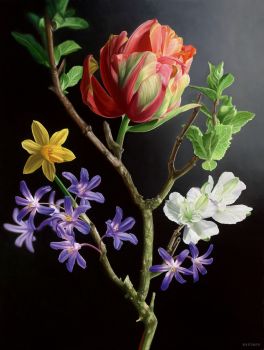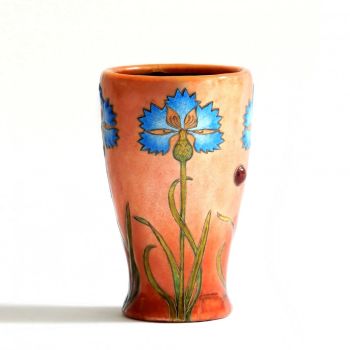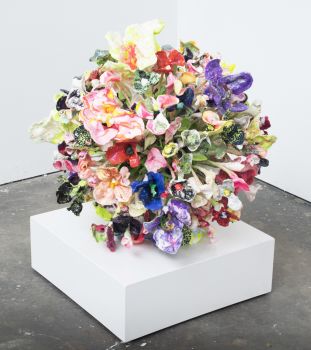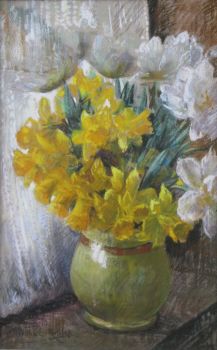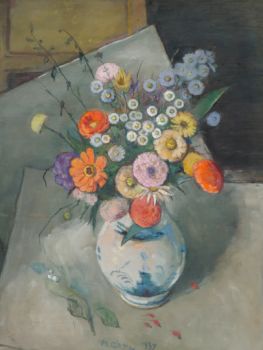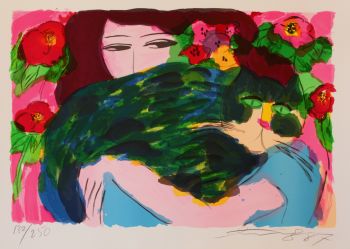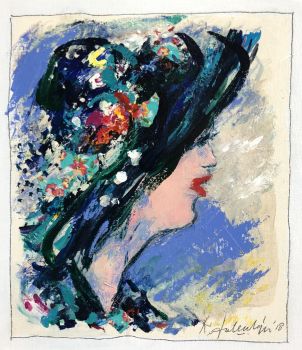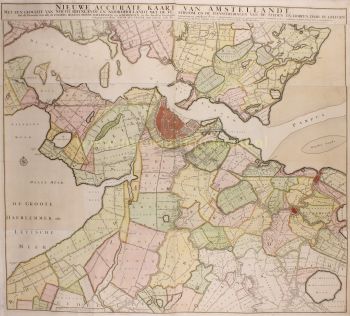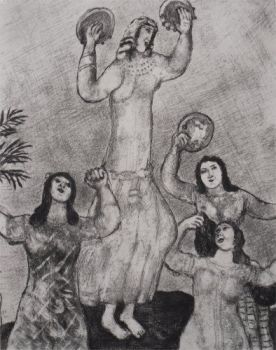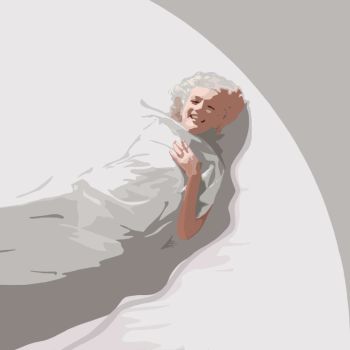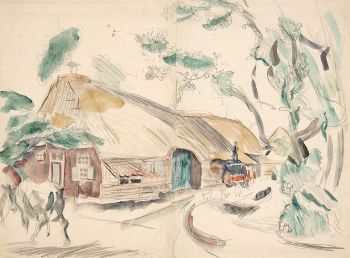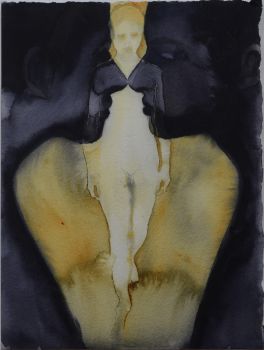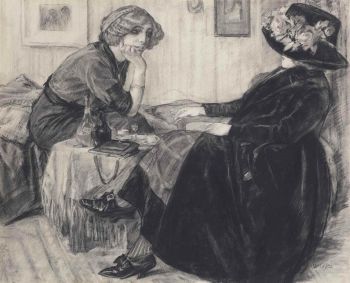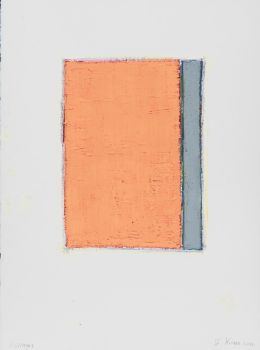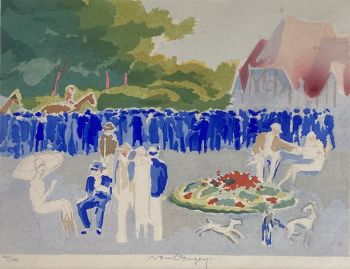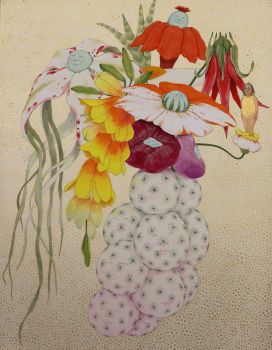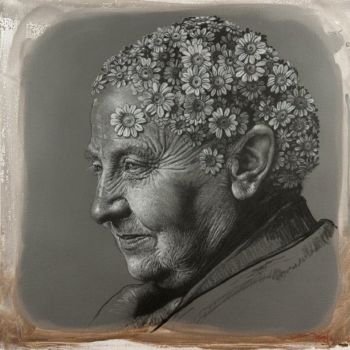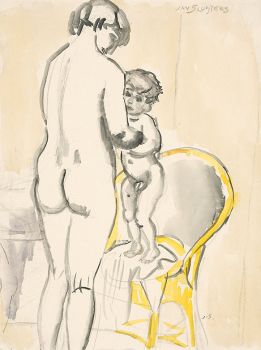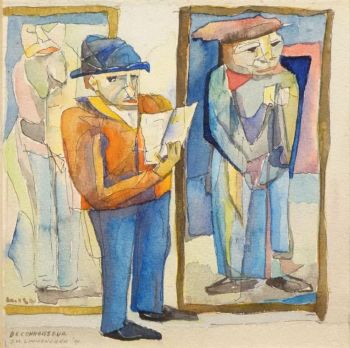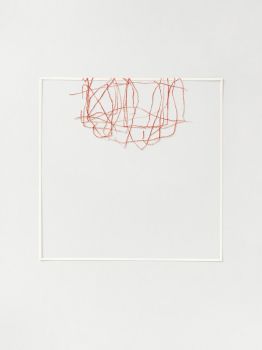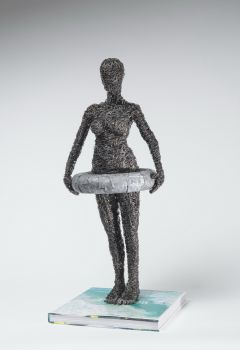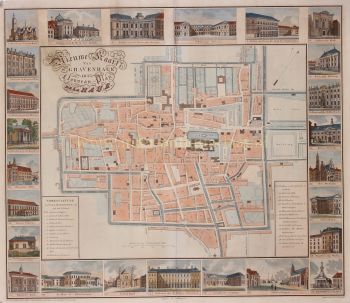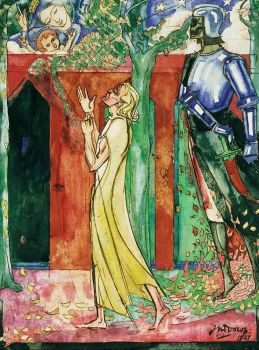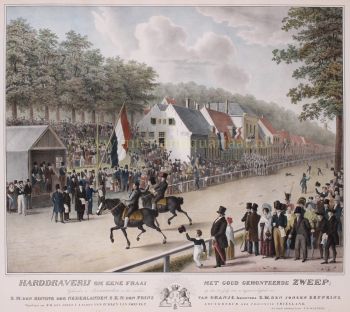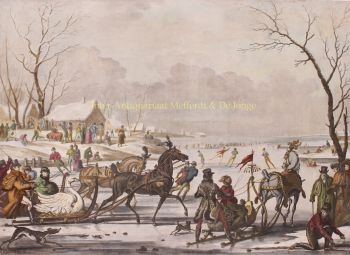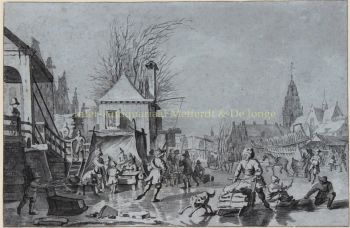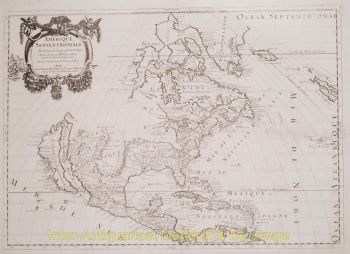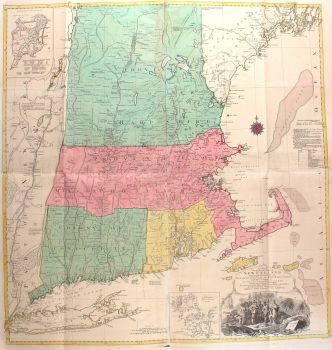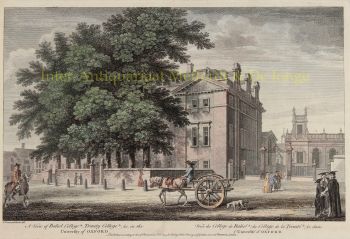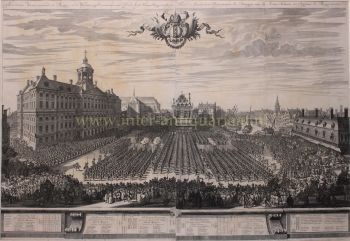Rose 1799
Gerard van Spaendonck
Papier
50 ⨯ 33 cm
€ 1.250
Inter-Antiquariaat Mefferdt & De Jonge
- Over kunstwerkRose a cent feuilles [rose with one hundred petalls) or cabbage rose, stippel engraving made by P.F. le Grand after a drawing by Gerard(us) van Spaendonck from the Fleurs dessinées d'après nature, published between 1799 and 1801. With original hand colouring. Size. (print) approx. 50 x 33 cm. The Centifolia roses date from around 1550. Although once regarded as forms of a species, they are now thought most likely to be hybrids between the autumn damask and an alba rose. Centifolias are usually compact bushes with heavy double flowers which often droop under there own weight. The colours varied from white to deep rose red plus striped and spotted varieties. They were much featured in the paintings of the Dutch masters and came to be known as "The rose of the painters". It has fragrant, mid pink, double flowers, the buds of which are covered in fine tubercles or filaments known as moss. Mosses are natural mutations which first occurred on Damask and Centifolia roses. They were very fashionable in the early eighteenth and nineteenth centuries when several hundred forms were raised. Gerard van Spaendonck (1756-1842) studied with decorative painter Willem Jacob Herreyns in Antwerp. In 1769 he moved to Paris, where in 1774 he was appointed miniature painter in the court of Louis XVI. In 1780 he succeeded Madeleine Françoise Basseporte as professor of floral painting at the Jardin des Plantes, and was elected a member of the Académie des beaux-arts shortly afterwards. Van Spaendonck contributed to over fifty works of Les Vélins du Roi, a famous collection of botanical watercolours owned by French royalty. From 1799 to 1801 he published twenty-four plates as part of his Fleurs Dessinees d'apres Nature (Flowers Drawn from Life), which were high-quality engravings for students of floral painting. Today the Fleurs Dessinees d'apres Nature are considered among the best botanical engravings in the world. Stipple engravings with which one is able to differentiate between different tones of gray, turned out to be highly suitable for depicting botanical details, a method that Van Spaendonck also taught his pupil Pierre-Joseph Redouté. Like other famous flower painters, Van Spaendonck was also technically perfect: in oil, watercolour, pen or pencil, on any scale. With attention to every minute detail and elegance and sophistication of the composition, he shows his mastery. Like Jan van Huysum, Van Spaendonck understood the zeitgeist and created flower compositions that matched the taste of the public of around 1800. He combined the traditional Dutch way of representing flowers with French sophistication and good taste. Price: Euro 1.250,-
- Over kunstenaar
Gerard was een oudere broer van Cornelis van Spaendonck (1756-1840), die eveneens een bekend schilder was. In de jaren 1760-1769 studeerde hij in Antwerpen bij de decoratieschilder Willem Herreyns. In 1769 verhuisde hij naar Parijs, en in 1774 werd hij dankzij bemiddeling door Claude-Henri Watelet op 28-jarige leeftijd tot miniatuurschilder aan het hof van Lodewijk XVI benoemd. Hij exposeerde voor het eerst in 1777. In 1780 volgde hij Françoise Basseporte (1701-1780) op als hoogleraar bloemschilderen aan de Jardin des Plantes. Kort daarop werd hij gekozen tot lid van de Académie des beaux-arts.
Van Spaendonck schilderde zowel in olieverf als aquarel. Hij maakte meer dan vijftig werken voor de Vélins du Roi, een befaamde collectie botanische aquarellen in het bezit van de Franse koninklijke familie. Van 1799 tot 1801 publiceerde hij 24 platen van zijn Fleurs Dessinées d'après Nature (Bloemen getekend naar het leven); gravures voor studenten bloemschilderen van hoge kwaliteit. Tegenwoordig is Fleurs dessinées d'après nature een hoog aangeslagen boek op het gebied van bloemschilderen.
In 1788 werd Van Spaendonck benoemd tot adviseur van de Académie, en in 1795 was hij een der oprichters van het Institut de France. In 1804 kreeg hij het Legioen van Eer. Kort daarop werd hij door Napoleon Bonaparte in de adelstand verheven. Van Spaendonck overleed in 1822 op 76-jarige leeftijd.
Op Groeseindstraat 99 in Tilburg is een plaquette te zien waar voorheen het geboortehuis van de gebroeders van Spaendonck heeft gestaan. Gerard van Spaendonck is naast schilder Karel Appel de enige Nederlander die op Père Lachaise in Parijs ligt begraven. Gerard ligt pal achter het graf van Chopin.
Bent u geïnteresseerd om dit kunstwerk te kopen?
Artwork details
Related artworks
- 1 - 1 / 1
- 1 - 4 / 24
Frères Daum
Daum Nancy – “Paysage Soleil Couchant” vase with two applied handles1900 - 1910
Prijs op aanvraagAntiques Emporium
1 - 4 / 24Jan Sluijters
Greet met Jantje, Moeder met kind, naakt staand op een stoel1900 - 1940
Prijs op aanvraagStudio 2000 Art Gallery
1 - 4 / 24- 1 - 4 / 12


